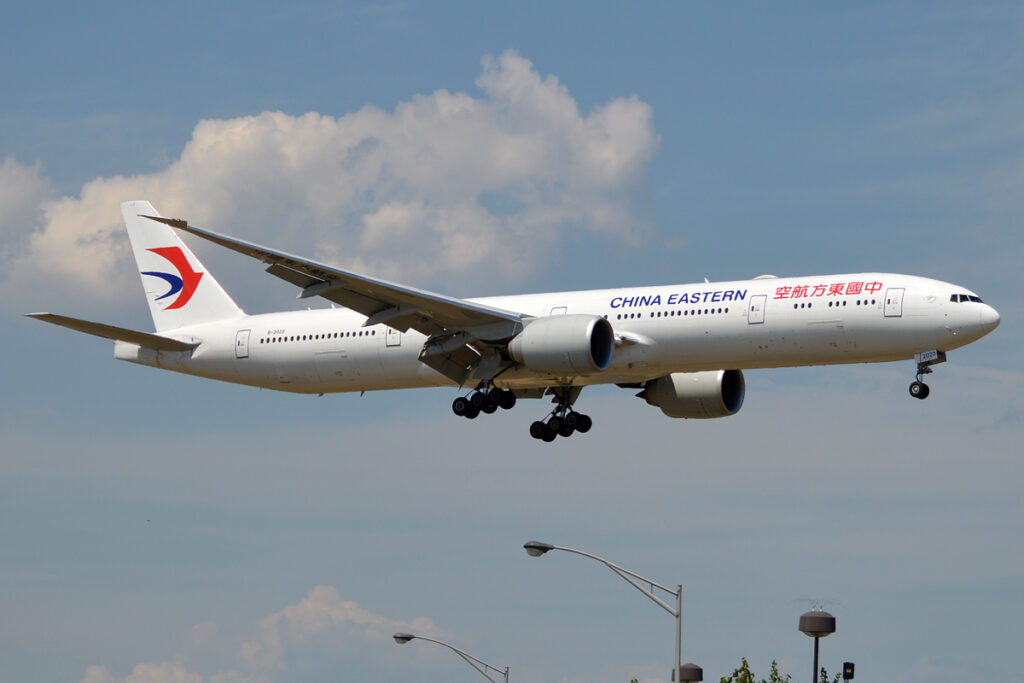
SHANGHAI—In a bold move set to reshape global aviation routes, China Eastern Airlines has announced a new long-haul service connecting Shanghai to Buenos Aires with a strategic stop in Auckland. The airline plans to operate this route twice weekly starting December 2025, utilizing its flagship Boeing 777-300ER aircraft.
The decision to include Auckland as a stopover is both a logistical necessity and a strategic opportunity. The great-circle distance between Shanghai Pudong (PVG) and Buenos Aires Ezeiza (EZE) is an astounding 10,580 nautical miles (19,594 kilometers), a stretch currently beyond the reach of any commercial aircraft for non-stop service under standard conditions.
The Strategic Choice of Auckland
By incorporating Auckland into the route, China Eastern effectively splits the journey into two manageable segments: PVG to AKL covering approximately 5,047 nautical miles, and AKL to EZE spanning about 5,580 nautical miles. This routing is only marginally longer than a direct flight from Shanghai to Buenos Aires, making it an efficient solution to bridge the vast distance between the two continents.
Moreover, Auckland offers China Eastern the chance to leverage fifth freedom traffic rights, allowing passengers to book flights solely between Shanghai and Auckland or Auckland and Buenos Aires. This flexibility opens up new travel possibilities, particularly for passengers between New Zealand and Argentina, a market with limited direct connectivity in recent years.
A Rare but Not Unprecedented Strategy
While China Eastern’s approach is innovative, it is not entirely without precedent. Air China, for instance, operates a similar long-haul service from Beijing to São Paulo with a stop in Madrid. This route, spanning 9,492 nautical miles, also utilizes a midway stop to maintain operational feasibility and capitalize on fifth freedom rights.
Both airlines demonstrate how strategic stopovers can extend the reach of ultra-long-haul flights, balancing operational constraints with commercial opportunities. These routes, while appearing unconventional, fulfill significant strategic purposes.
Implications for China Eastern
This new route aligns with China Eastern’s broader strategy to expand its global footprint by connecting underserved or strategically important city pairs. The service links East Asia with South America, two regions experiencing growing economic and cultural exchanges. It also allows the airline to explore a niche market with limited competition.
For passengers, the new route offers a more direct travel option between China and Argentina, with a convenient stop in Auckland. This could potentially reduce total travel time compared to existing indirect connections via the Middle East or Europe.
Technical and Commercial Considerations
China Eastern’s choice to deploy the fuel-efficient Boeing 777-300ER on this route is a calculated decision. The aircraft will feature six seats in First Class, 52 in Business, and 258 in Economy, offering a total of 316 seats. This configuration represents a significant capacity increase over the Airbus A330-200 currently used on the Auckland route, which seats 263 passengers.
If successful, this venture could set a precedent for more ultra-long-haul services using intermediary hubs. It highlights the potential of strategic routing combined with advanced aircraft technology to overcome the challenges of long-distance air travel.
The aviation industry will be watching closely as China Eastern embarks on this ambitious journey. The airline’s innovative approach may pave the way for future developments in global air travel, offering new connections and opportunities for passengers worldwide.
Stay informed with us as we continue to cover this evolving story. Follow us on social media and join our Telegram group for the latest updates in aviation.







